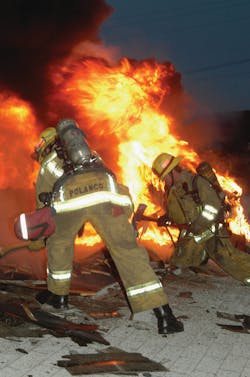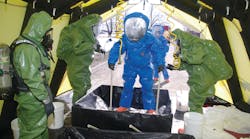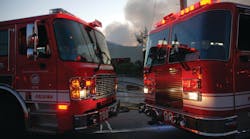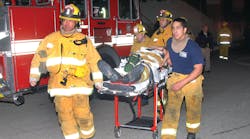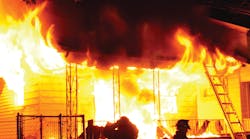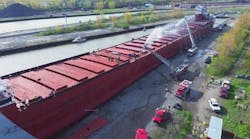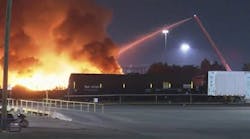As we will explain from the start, the answer to this question may be more meaningful if it were restated and asked of the entity that is the authority having jurisdiction (AHJ): How does our AHJ treat the standards that are published by the National Fire Protection Association (NFPA) and the Insurance Services Office (ISO) – as requirements or as guidelines?
NFPA standards
The NFPA is a non-profit organization that, according to its website, has a mission to reduce the worldwide burden of fire and other hazards on the quality of life by providing and advocating consensus codes and standards. While the standards developed by the NFPA are used to guide many aspects of fire department operations, they are not laws. And since they are not laws, they are not requirements. However, if the AHJ adopts an NFPA standard, then it could be argued the standards then become requirements. Absent the formal adoption by an AHJ, a fire department has no obligation to comply with a consensus standard.
This does not, however, absolve an AHJ from potential liability in the event something would go awry and an attorney representing the aggrieved would cite an NFPA standard as a nationally accepted best practice for whatever argument the attorney is advancing on behalf of the plaintiff. So even if the AHJ does not formally adopt an NFPA standard, that does not mean the standard may not be used as a means to judge a fire department’s compliance to a national accepted best practice as defined by an NFPA standard.
The best thing a fire department can do is to consult with its attorney to determine whether the AHJ should adopt a standard and to obtain an opinion on the potential liability for non-compliance. The decision to adopt or not adopt an NFPA standard rests with the AHJ. Where the fire department may be an independently operated entity, it may be the AHJ. If the fire department is a municipal department, the city is then the AHJ and makes the decision whether to adopt NFPA standards.
ISO data
The ISO collects and maintains information about municipal fire protection efforts throughout the United States. The ISO analyzes data using its Fire Suppression Rating Schedule. This results in the community receiving a Public Protection Classification (PPC) from 1 to 10. A classification of 1 is assigned to fire departments that are believed, by the ISO’s rating system, to provide superior property fire protection. A classification of 10 indicates the municipality’s fire suppression program does not meet the minimum criteria set by the ISO. According to the ISO’s website: “By classifying communities' ability to suppress fires, ISO helps the communities evaluate their public fire-protection services. The program provides an objective, countrywide standard that helps fire departments in planning and budgeting for facilities, equipment, and training. And by securing lower fire insurance premiums for communities with better public protection, the PPC program provides incentives and rewards for communities that choose to improve their firefighting services.”
Like the NFPA, the standards set by the ISO are not law and therefore each AHJ has the opportunity to consciously decide how much deference it wishes to give to its ISO PPC rating. The decision as to what PPC a municipality obtains, or maintains, is one to be made by the AHJ. It is a recommended best practice that the goal for what PPC a municipality achieves or maintains established with close consultation with the fire department. Each incremental improvement in the ISO PPC has an associated cost. This cost is not just to achieve the rating, but also the cost for ongoing maintenance of systems, equipment, staffing and training to keep the classification.
An AHJ must weigh the cost of obtaining or maintaining a certain ISO PPC with the benefits (perceived or real). For example, a real benefit may come in the way of a reduction in fire insurance premiums for residential and business properties. A perceived benefit may come in the belief the fire department is “better” than the fire department in the next community because its ISO PPC is lower. While this benefit may be real (i.e., the fire department with the lower rating may be “better,” although the definition of what constitutes “better” is not clearly defined). For example, would having firefighters who are cross-trained as paramedics and able to respond to a heart attack in four minutes be “better” than a fire department that does not provide any form of EMS and the non-fire department ambulance response time to a heart attack is 20 minutes?
According to the ISO’s website, the FSRS evaluates three criteria:
• Fire alarm and communications systems – A review of the fire alarm system accounts for 10% of the total classification. The review focuses on the community’s facilities and support for handling and dispatching fire alarms.
• Fire department – A review of the fire department accounts for 50% of the total classification. ISO focuses on a fire department’s first-alarm response and initial attack to minimize potential loss. Here, ISO reviews such items as engine companies, ladder or service companies, distribution of fire stations and fire companies, equipment carried on apparatus, pumping capacity, reserve apparatus, department personnel and training.
• Water supply – A review of the water-supply system accounts for 40% of the total classification. ISO reviews the water supply a community uses to determine the adequacy for fire-suppression purposes. We also consider hydrant size, type and installation, as well as the inspection frequency and condition of fire hydrants.
The ISO FSRS and PPC system has not been without its critics and sources tell us they are in the process of revamping the rating system to consider factors like response times – an arguably critical component to determining the effectiveness of fire suppression efforts, yet noticeably absent from the list above.
The ISO PPC is neither a standard nor a requirement. Rather, it is a tool that an AHJ, in consultation with the fire department, can use in goal setting and in the justification process for funding improvements that will reduce the PPC. The AHJ normally determines the “need” to adopt a consensus standard or to what extent it supports the ISO-PPC classification system.
Documenting a need
It is recommended that all departments be diligent in maintaining their response data. Data may be applied to defend the option to adopt a particular standard. If we use the NFPA fireground staffing standards, 1710 and 1720, as examples, we know of departments that have developed their own standard of response based on an historical analysis of response data. These departments have meticulously maintained response data; tracking types of response, number of responders, response and control time, etc., in order to determine benchmarking for their agency. This often makes sense, since the outcome (response benchmark) is truly based on local data and not a national consensus.
Your local data may also be used to justify why you should strive to meet a national consensus standard such as NFPA 1710 or 1720, especially if your numbers show an inability to meet the standard. For example, both of these standards describe minimum staffing for fireground operations. If you have kept accurate fireground staffing numbers, and this data indicates that you are unable to place the recommended number of responders on scene within the stated time, this may be useful in demonstrating a documented need.
Keep in mind that you will need to tie in the meaningfulness of the staffing to fireground operations. Using the National Institute of Standards and Technology (NIST) residential fireground study, Report on Residential Fireground Field Experiments (http://www.nist.gov/customcf/get_pdf.cfm?pub_id=904607), will help in this endeavor.
